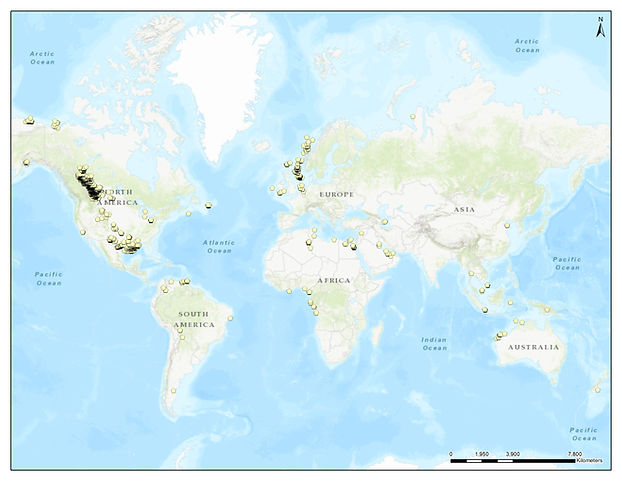
PVT Analysis
Maximize Reservoir Performance with GeoMark’s PVT and Geochemical Analysis
PVT analysis is more than just measuring shrinkage and GOR; it’s about transforming fluid samples into strategic insight. With cutting-edge PVT laboratories and decades of experience, GeoMark helps operators unravel the full story of their fluids, from source to sale.

Global PVT Database (RFDbase)
Explore Our Services:
Compositional Analysis
-
Full compositional breakdown of reservoir fluids (C1 to C36+, CO2, H2S, and N2)
-
Extended gas chromatography for detailed fluid characterization
-
Advanced hydrocarbon fingerprinting for fluid correlation and allocation
Phase Behavior Studies
-
Constant Composition Expansion (CCE) and Constant Volume Depletion (CVD) experiments
-
Differential Liberation (DL) tests for oil and condensate systems
-
Separator tests to determine optimal production strategies
-
Multi-stage flash liberation tests for accurate phase characterization
Fluid Property Determination
-
Density, viscosity, and compressibility measurements at reservoir conditions
-
Gas-oil ratio (GOR) and formation volume factor (Bo, Bg) evaluation
-
Live fluid sampling and recombination for accurate in-situ measurements
Flow Assurance & Solid Deposition Analysis
-
Wax appearance temperature (WAT) and wax precipitation studies
-
Asphaltene onset pressure (AOP) and stability assessments
-
Hydrate formation and inhibition testing to prevent flow restrictions
Enhanced Reservoir Connectivity & Continuity Studies
-
Ultra-High-Resolution Gas Chromatography (UHRGC) for precise reservoir connectivity assessment
-
Geochemical modeling to support well allocation and drainage strategies
-
Integration with geophysical and petrophysical datasets for comprehensive reservoir understanding
From PVT to Geochemistry: A Complete Picture
GeoMark is unique in combining traditional PVT with advanced geochemical fingerprinting techniques:
-
Isotopes, Biomarkers, Molecular Ratios: Applied directly to PVT samples to trace thermal maturity, migration history, and zone contributions.
-
Production Allocation: In stacked or commingled reservoirs, PVT + geochemistry resolve which zones are truly contributing—reducing uncertainty in reserves booking and regulatory compliance.
-
Reservoir Connectivity: Go beyond pressure and GOR. Molecular signatures reveal subtle compartmentalization or connectivity even where PVT looks identical.
Why This Matters
-
Better EOS Models: Full compositional data, matched separator conditions, and multi-phase testing result in accurate forecasts—not approximations.
-
Improved Decision-Making: Whether you're evaluating legacy assets or planning new developments, integrating geochemical and PVT data helps you:
-
Detect compositional gradients
-
Confirm fluid continuity
-
Validate historical data for modern use
-
-
Maximized Sampling ROI: Apply advanced analyses to the same samples already collected—no extra downhole work required.
Real-World Impact: Case Studies
Case 3
Gas cap or separate accumulation?
Integrated data revealed a single reservoir, avoiding misclassification and development missteps.
Explore The GeoMark Research Advantage
-
Over 30 of fluid data expertise
-
Global PVT + geochemistry database (RFDbase)
-
Seamless integration with EOS, MPFM calibration, and regulatory workflows
-
Trusted by operators across offshore, onshore, conventional, and unconventional plays
GeoMark’s PVT analysis services give you more than measurements—they give you clarity, confidence, and control. From deepwater phase envelopes to tight rock allocations, our PVT + geochemistry solutions turn routine samples into actionable data that drives performance.

